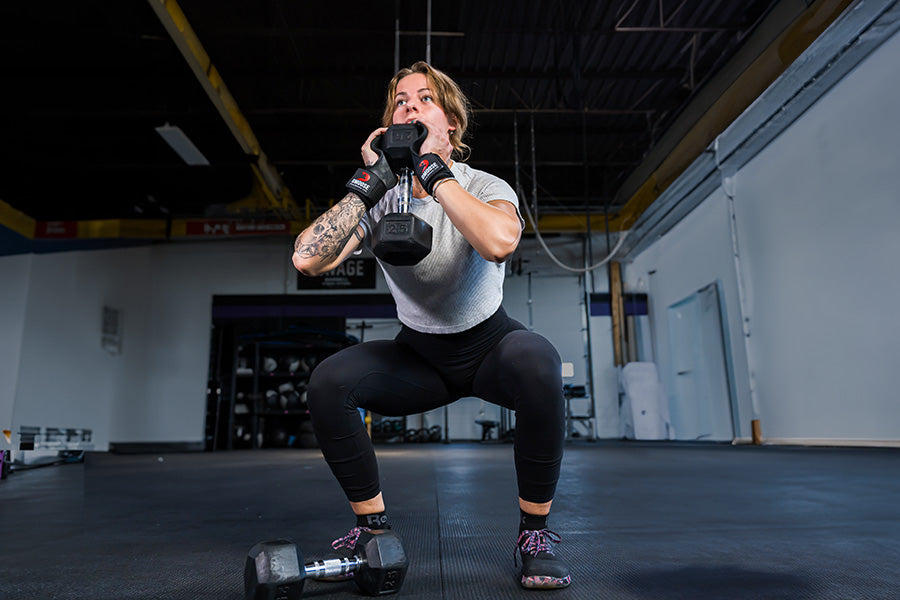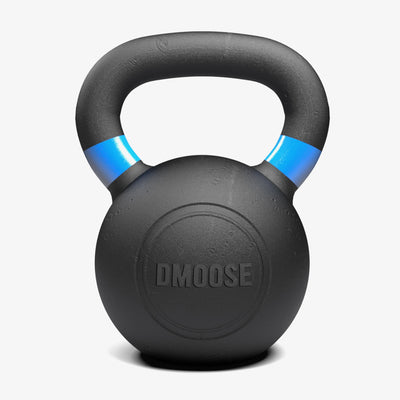Struggling with stubborn outer thigh fat or lack of definition? You're not alone! And the good news is, you don’t need fancy machines to see results. With the right moves and a bit of consistency, you can tighten and tone your outer thighs right at home.
In this guide, we’ll walk you through six proven exercises that actually work. Pair them with DMoose Booty Bands for even better results and feel the burn where it counts.
Outer Thigh Muscle Anatomy

The outer thigh muscles, also known as the abductor muscles, include the gluteus medius, gluteus minimus, and tensor fasciae latae. These muscles play a vital role in hip stability, balance, and leg movement.
1. Gluteus Medius
This muscle helps stabilize the pelvis during walking, running, and other lower-body exercises.
2. Gluteus Minimus
Working alongside the gluteus medius, it aids in pelvis stabilization and supports leg movement, especially during side-to-side motions.
3. Tensor Fasciae Latae (TFL)
The TFL assists in hip flexion and outward rotation of the thigh, playing a key role in activities that involve lifting or rotating the leg.
Understanding the anatomy of these muscles helps you target them more effectively during workouts for optimal toning and strength.
6 Best Exercises to Target Your Outer Thighs
Whether it's the inner thigh, outer thigh, or both, many of us aim to tighten and tone these areas. While they can be challenging to target, the right exercises can help you build firmer, more defined outer thighs.
1. Goblet Squats

Goblet squats are a powerful lower-body exercise that not only works the quads, hamstrings, glutes, and calves but also activates the outer thigh muscles, particularly the abductors. This makes them ideal for building strength, stability, and definition in your outer thighs.
How to Perform Goblet Squats
- Hold a dumbbell or kettlebell close to your chest with both hands.
- Stand with feet slightly wider than shoulder-width apart.
- Keep your chest up and core engaged as you lower into a squat.
- Push your knees outward to activate the outer thighs and abductors.
- Lower until your thighs are parallel to the floor, then drive through your heels to return to standing.
- Repeat for 10–12 controlled reps.
2. Dumbbell Curtsy Lunge

The dumbbell curtsy lunge is a powerful outer thigh exercise that enhances hip stability and improves overall leg function. It targets the outer thighs, glutes, hamstrings, and quads, making it ideal for building strength and control in the lower body.
How to Perform Dumbbell Curtsy Lunge
- Stand with feet hip-width apart, holding a dumbbell close to your chest.
- Step your right leg diagonally behind your left, crossing it into a curtsy position.
- Lower into a lunge while keeping your back straight and core engaged.
- Descend as far as comfortable without letting the front knee cave in.
- Push through your front heel to return to standing.
- Repeat on the other side for the desired number of reps.
3. Single-Leg Lateral Lunge

The single-leg lateral lunge is a dynamic movement that targets the outer thighs through side-to-side motion. It activates key muscles like the gluteus medius, tensor fasciae latae, and vastus lateralis, helping to improve balance, mobility, and strength in the lower body.
It also engages both the hip abductors and adductors, promoting greater hip stability and overall leg control.
How to Perform Single-Leg Lateral Lunge
- Stand tall with your feet hip-width apart and hands on your hips or in front of your chest.
- Step your right leg out to the side, keeping the left leg straight.
- Bend your right knee to about 90 degrees while pushing your hips back.
- Keep your chest up and core tight throughout the movement.
- Push off your right foot to return to the starting position.
- Repeat on the opposite side.
4. Clamshell

The clamshell is a simple yet highly effective exercise for strengthening the outer thighs, especially when done at home. It primarily targets the gluteus medius, a key muscle for hip stability and lateral leg movement.
This move helps activate underused muscles in the hips and outer thighs, making it excellent for improving balance, alignment, and overall lower-body strength.
How to Perform Clamshell
- Lie on one side with your knees bent and legs stacked.
- Rest your head on your arm and keep your feet together.
- Slowly lift your top knee while keeping your feet touching.
- Pause at the top, then lower the knee with control.
- Repeat for 10–15 reps, then switch sides.
- For added resistance, place a band just above your knees.
5. Glute Bridge

The glute bridge is a foundational bodyweight exercise that effectively targets the glutes and outer thighs. It also supports hip abduction, making it a great move for building strength and definition in the side of your legs.
In addition to toning your lower body, it improves posture and plays an important role in maintaining spinal support through stronger glutes and hamstrings.
How to Perform Glute Bridge
- Lie on your back with knees bent, feet flat on the floor hip-width apart.
- Place your arms at your sides with palms facing down.
- Press through your heels and lift your hips off the floor by squeezing your glutes and hamstrings.
- Pause briefly at the top without overextending your back.
- Slowly lower your hips back to the ground.
- Perform 3 sets of 10–12 reps, adjusting as needed.
6. Romanian Dumbbell Deadlift

The Romanian dumbbell deadlift is a key posterior chain exercise that targets the hamstrings, glutes, and lower back. It also activates the outer thighs through controlled hip movement, making it a great addition for shaping and strengthening your legs.
In addition to building strength in the lower body, this movement improves core stability, balance, and posture when performed with proper form. Using a quality powerlifting barbell or dumbbells can help you perform this exercise safely and effectively.
How to Perform Romanian Dumbbell Deadlift
- Stand with feet hip-width apart, holding a dumbbell in each hand in front of your thighs.
- Keep a slight bend in your knees and hinge at the hips to lower the dumbbells along your legs.
- Maintain a straight back and engage your core throughout the movement.
- Lower until you feel a stretch in your hamstrings, then push through your heels to return to standing.
- Squeeze your glutes at the top before beginning the next rep.
- Complete 10–12 slow, controlled reps per set.
FAQs
1. What other exercise builds the outer thigh?
Some other possible options for working the outer thigh include lunges, side leg lifts, and squats. Additionally, plyometric exercises like jumping squats can help strengthen and tone the outer thigh muscles.
2. How do you target the outer quad?
You can target the outer quad through various techniques, including specific exercises that focus on strengthening the hips and lower body muscles, engaging in cardiovascular exercise that engages the entire body.
3. Do squats work the outer thigh?
Squats primarily target the muscles of the lower body, including the quadriceps, hamstrings, and glutes. While squats engage the muscles on the front, back, and sides of the thighs, they primarily work the inner and outer portions of the quadriceps (front of the thighs) rather than specifically targeting the outer thighs.
4. How do you build upper outer thigh muscles?
To build the upper outer thigh muscles, focus on exercises targeting hip abductors, like clamshells. Start with lighter resistance or body weight and gradually increase the challenge as you get stronger.
5. Can resistance bands help in targeting the outer thighs?
Yes, resistance bands are excellent for activating and strengthening the outer thigh muscles. They provide constant tension during exercises like lateral walks, clamshells, and leg lifts, making the workouts more effective.
6. How often should I train my outer thighs?
For best results, train your outer thighs 2–3 times a week, allowing at least 48 hours of recovery between sessions. Consistency paired with proper form is key for noticeable toning and strength gains.
7. Are outer thigh exercises effective for fat loss?
While spot reduction isn’t possible, outer thigh exercises help build lean muscle, which boosts metabolism. Combined with a calorie-controlled diet and full-body workouts, they can contribute to fat loss and improved muscle definition.
Conclusion
Toning your outer thighs doesn’t have to feel like a struggle. With the right mix of exercises like goblet squats, lateral lunges, and glute bridges, you can build strength, definition, and confidence in every step you take. Whether you're working out at home or in the gym, consistency and proper form are key to unlocking real results.
Need a little extra support during your workouts? Explore high-quality gear at the DMoose store to maximize your results and make every rep count. Your dream thighs are just a few steps away.
And as always, consult with a fitness professional before starting any new workout routine. You've got this. Good luck!
Reading List
The Ultimate Inner Thigh Workout: 10 Best Inner Thigh Exercises for Women
How to Train Your Hip Abductor Muscles: Exercises & Workout
How to Get Started With Hybrid Training for Strength and Endurance
Five at-Home Exercises for Athletes to Build Stronger Legs
Best Cardio Workouts for Legs and Thighs - 8 Options for a Great Butt and Thighs













